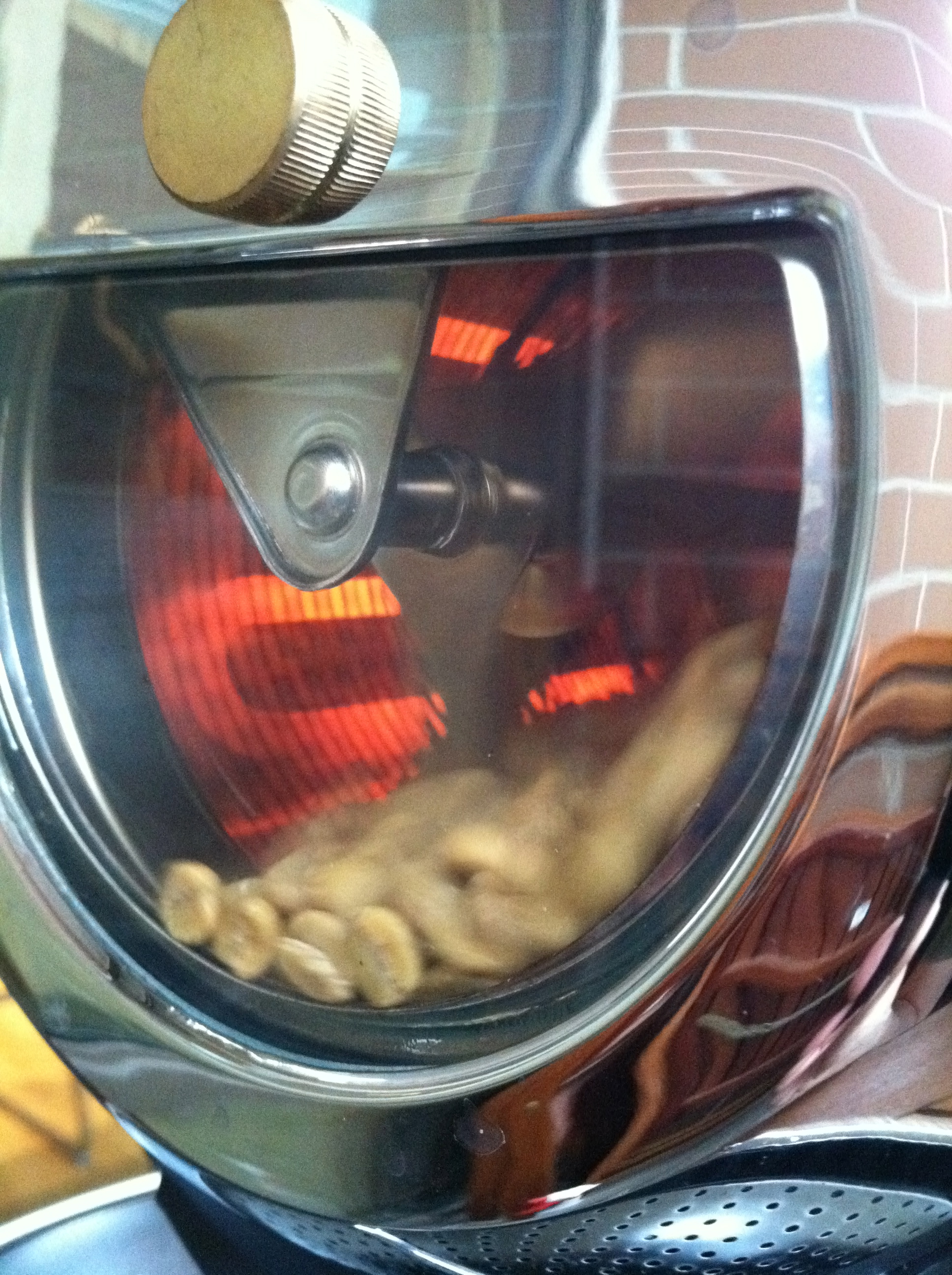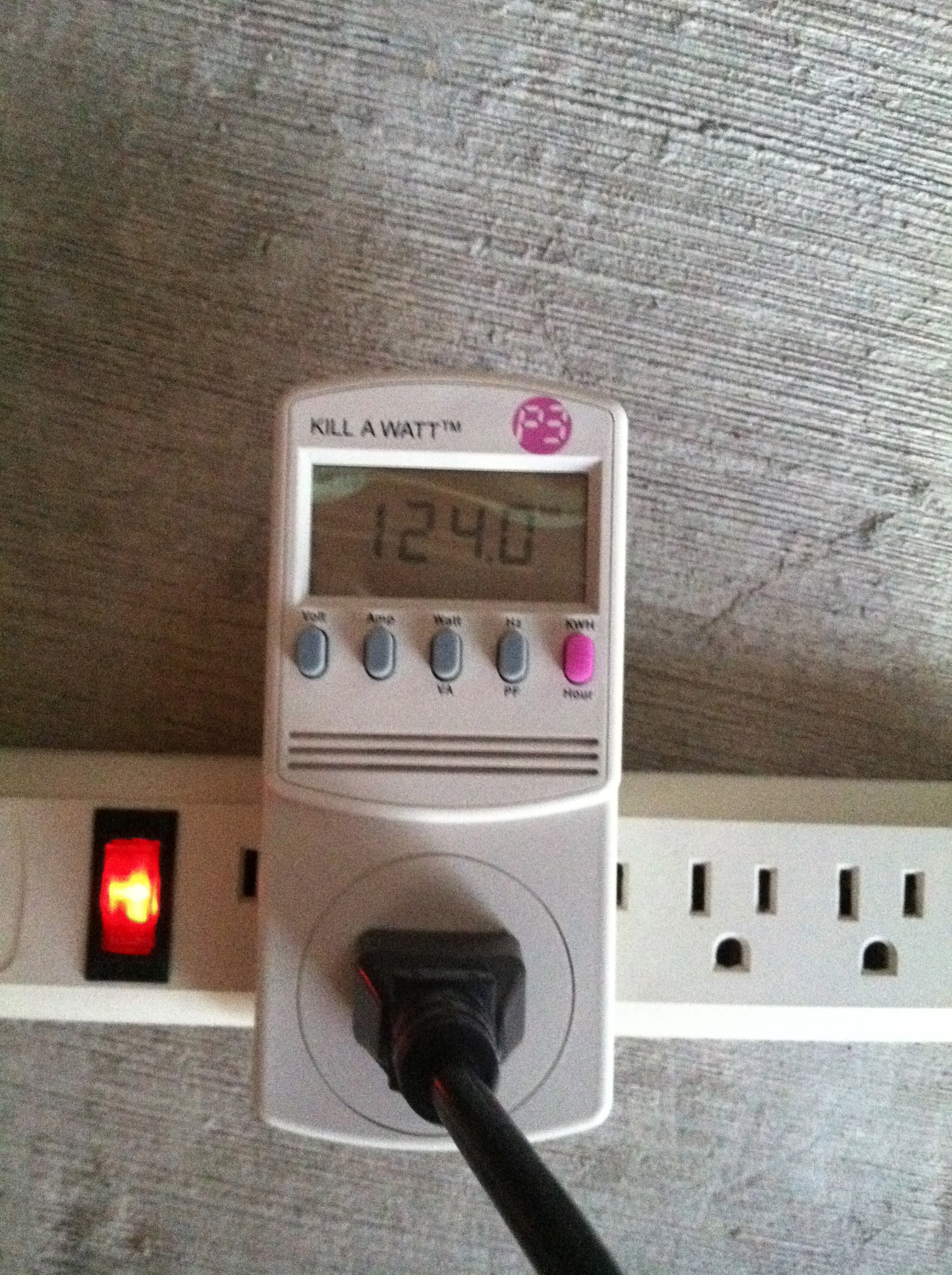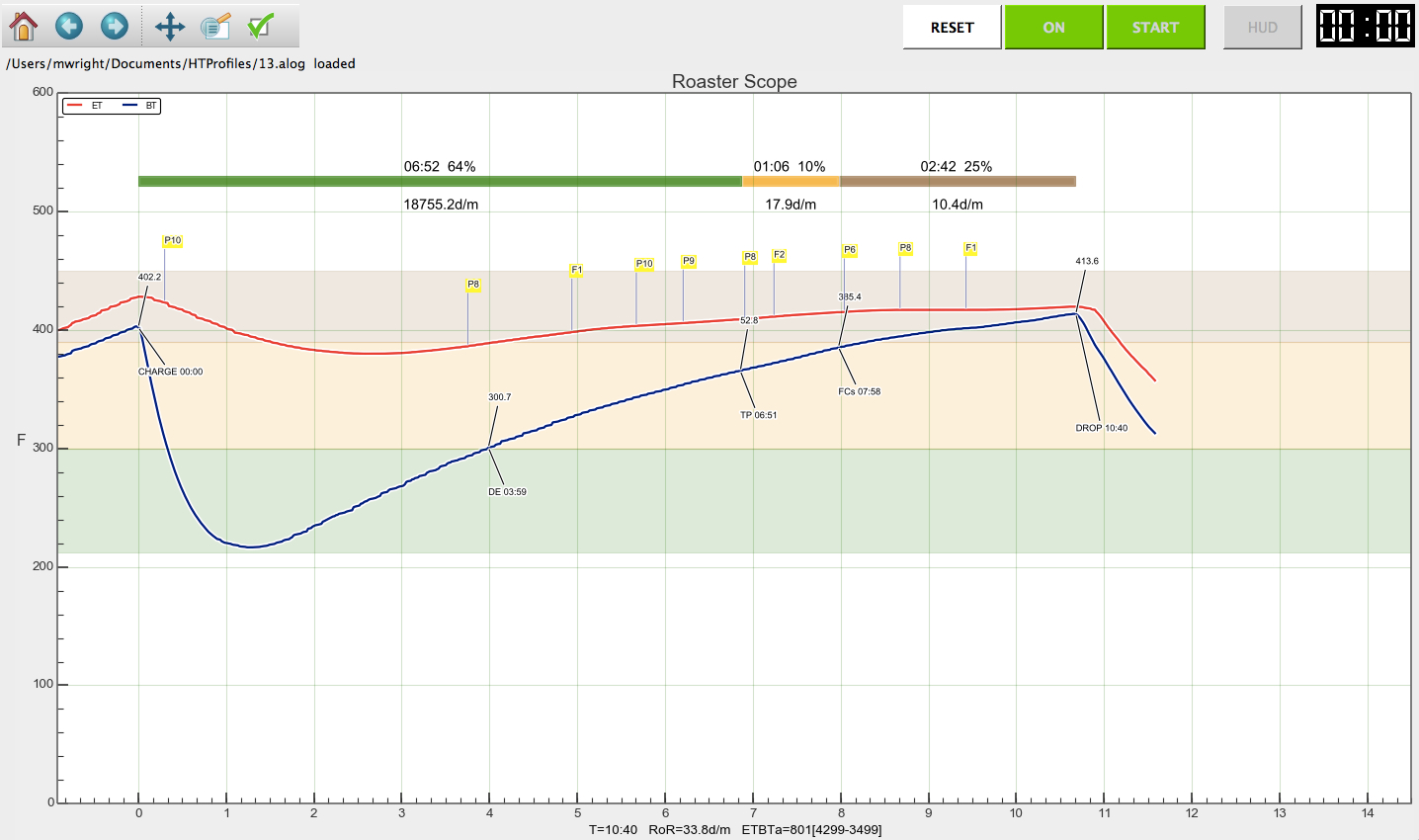Mastering the element means you not only know the status of your element at all times, but you can better time energy application to manipulate the environment temperature, which in turn will manipulate the bean temperature and ultimately give you more control over the roasting process.

This article assumes you have the ability to consistently and accurately measure bean temperature (BT) and environment temperature (ET). If you need help installing the probes, I have detailed and illustrated instructions here. Once you’re able to read both temps simultaneously, you should also get software that can read and plot those temps in real time. I use Artisan visual scope and highly recommend it. Also, I have the model KN-8828P-2 HotTop. Other models will operate differently but the process below should still help you find the best way to master the element of your specific model.
In a nutshell, this is what we’ll be doing:
- You'll need a kill-a-watt meter or similar device
- Take note of the line voltage before turning on the unit
- Take note of the line voltage with the heating element on
- Note the time it takes to get the element completely heated to a red-hot state
- Use Artisan to help guide the roast by estimating future temperatures
With your kill-a-watt meter plugged in and your roaster plugged into the meter, first take note of the line voltage without turning on the unit. This is your baseline with the element off. Then fire up your roaster and during the pre-heat cycle, take note of the voltage; it should be lower — how much lower depends on several things but the important thing to know is that it will differ between circuits in your house. For example, in my apartment, the baseline voltage hovers around 122 volts with the element off and 118 with it on. As I’m roasting, I keep an eye on the meter. If the voltage drops to 118 or so, I know the element is on. If the meter reads 122, I know the element off.

Next you’ll want to time how long it takes your element to get red-hot. For my roaster, the element takes about 90 seconds to reach peak redness, which is its point of maximum energy transfer.
Remember; for this exercise we’re focused on three specific metrics that help reveal what’s happening inside the bean and they occur as a dependency chain:
- Voltage (is the element on or off)
- ET (to what degree is the rate of rise (RoR) in temperature)
- BT (again, to what degree is the RoR)
Knowing if your element is on or off will enable you to more accurately control the roast and knowing how long it takes to get the element red-hot will allow you to control how much heat energy you’re delivering at a specific point in the roast. For example, I know that it takes about 90 seconds to reach maximum output on my roaster but if I just need enough heat to maintain a slow ET RoR, I can “flutter” the element off and on every 15 to 30 seconds and avoid adding too much heat.
Next we’ll use a feature of the Artisan software to help us reach a target temp at a specific time. The feature is called linear projection and you enable it by going to Tools > Extras and enabling linear projection.

This feature projects a straight line into the “future” of the plot graph based on the current, calculated RoR for each temp. As long as the RoR remains the same, you’ll hit the target temp/time.
Having this projection allows you to do the following;
- You can see if you are running too hot or cold and adjust accordingly by first noting the element's status based on your kill-a-watt reading. i.e. if the element is on and you're running too hot, you know you need to decrease the target temp to shut down the element.
- You can see that you're on target and you can take actions to maintain the current RoR, possibly by fluttering the element as mentioned above or by doing nothing.
To wrap it all up; if you know precisely when your element is on or off you can better manage the environment temp, which in turn determines the bean temp and this gives you much more control over your roasts. Since I started using this technique, my roasts have greatly improved and it’s enabled me to perform other experiments much easier, like stretching or shortening my ramp period or my roast development period. The HotTop doesn’t turn on a dime like a gas roaster will, but we can work around its idiosyncrasies to produce pretty damn good coffee!
